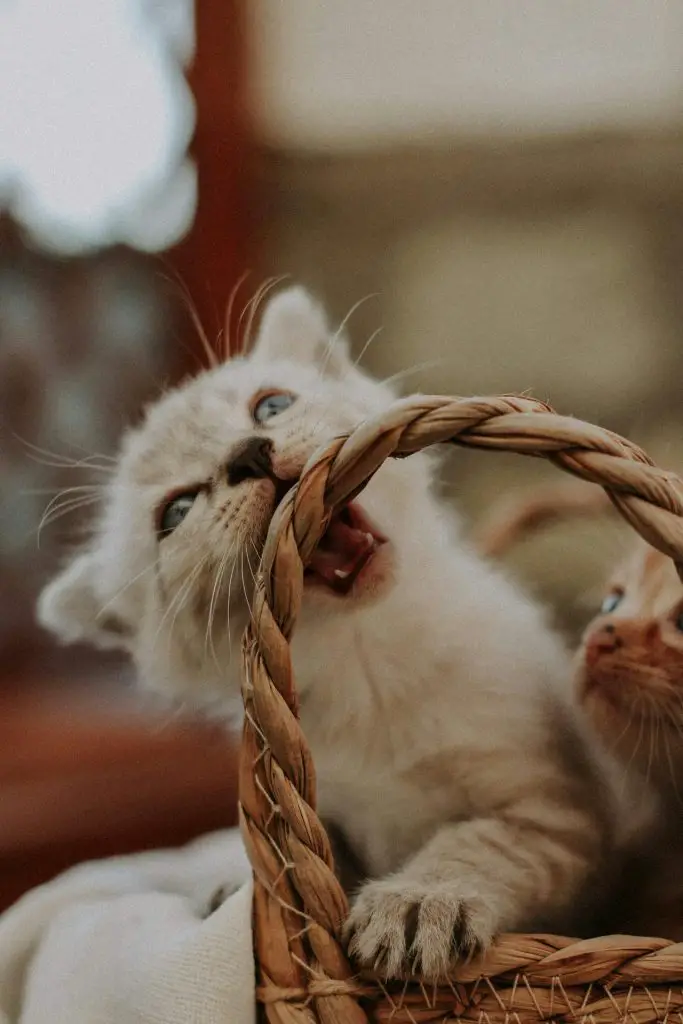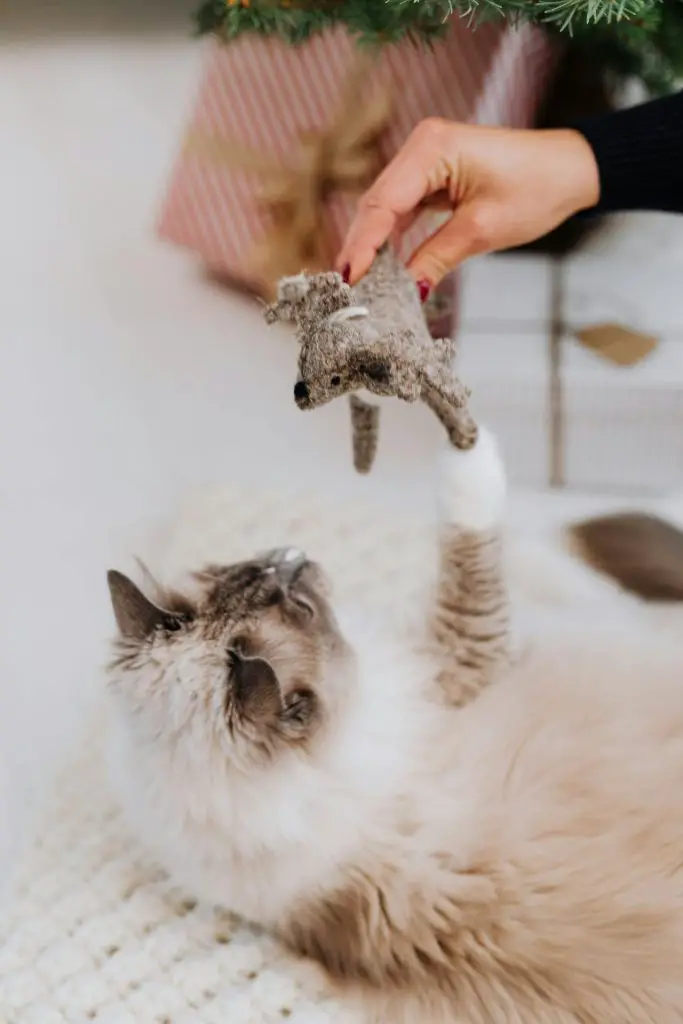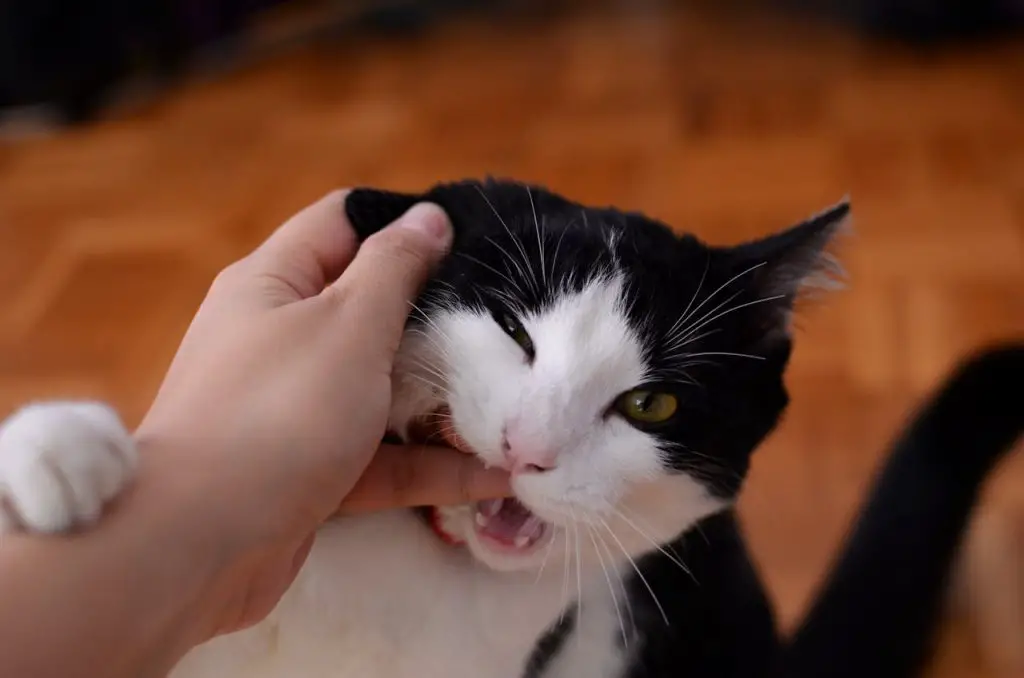
To train your cat not to bite, you’ll need to tackle the underlying causes of their biting behavior. Start by identifying the reasons behind your cat’s biting, whether it’s play aggression, fear, or overstimulation. Teach your cat boundaries by establishing clear rules and paying attention to their communication cues. Use positive reinforcement techniques, such as clicker training and rewards, to encourage gentle behavior. Provide alternative stimulation through engaging toys and regular playtime. By taking these steps, you’ll be well on your way to addressing your cat’s biting behavior, and you’ll discover even more effective strategies to guarantee a harmonious relationship.
Table of Contents
Key Takeaways
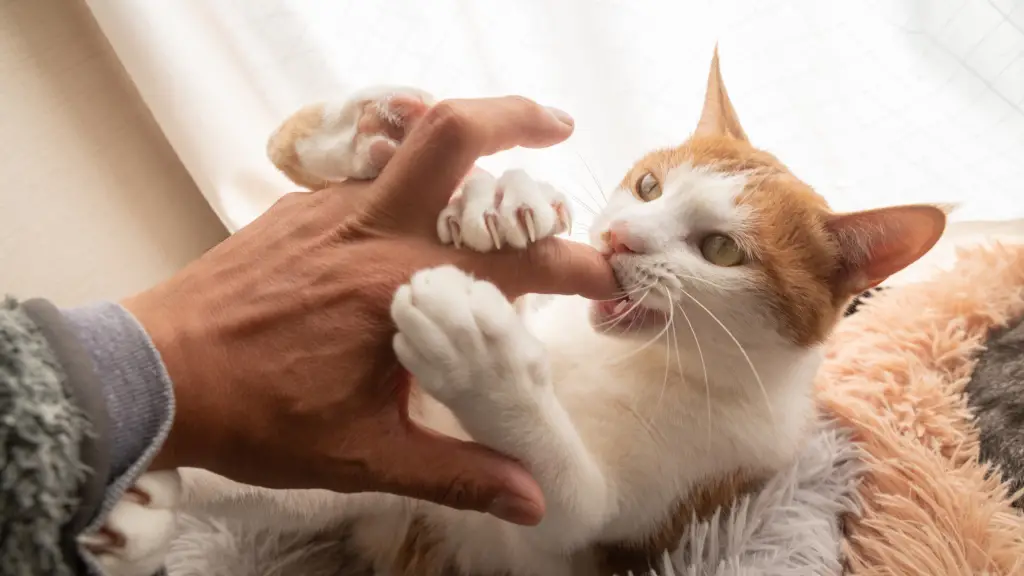
- Identify common biting triggers such as play, petting, hunger, and fatigue to develop effective behavior modification plans.
- Teach your cat boundaries by establishing clear rules and recognizing communication cues like tail swishing and hissing.
- Manage playtime aggression by monitoring body language, using gentle play, and setting time limits to prevent exhaustion.
- Use positive reinforcement techniques like clicker training and reward gentle behavior with high-value treats to encourage repetition.
Identify Reasons for Biting
Identifying the reasons behind your cat’s biting is essential, as it helps you understand what triggers this behavior and take effective steps to address it.
You’ll want to examine your cat’s behavior closely, looking for patterns or specific situations that seem to lead to biting.
Are they biting during play, or when you’re petting them? Do they bite when they’re hungry or tired? By recognizing these biting triggers, you’ll be better equipped to develop a plan to stop the behavior.
As you study your cat’s behavior, consider common causes of biting, such as overstimulation, pain, or fear. Your cat may be biting due to dental issues or arthritis, so a veterinary check-up is in order.
This post contains affiliate links. However all the information provided on this site are my own honest opinions. See more in Disclaimer.
Teach Your Cat Boundaries

To establish a biting-free relationship with your cat, you’ll need to set clear boundaries by teaching your cat what’s and isn’t acceptable behavior, especially when it comes to physical interaction.
Cats value their personal space and have a unique way of communicating their boundaries.
By paying attention to cat communication, such as tail swishing, ear flattening, or hissing, you can gauge your cat’s comfort level and avoid overstepping.
Respect your cat’s feline territory by not touching or handling them when they’re eating, sleeping, or using the litter box.
You should also avoid sudden movements or touch, as this can startle your cat and lead to biting.
Instead, approach your cat calmly and let them initiate contact. If your cat nips or bites, firmly say ‘no’ and withdraw your hand.
This will help your cat understand that biting isn’t an acceptable way to interact.
By setting and enforcing these boundaries, you’ll help your cat understand what behavior is expected of them, reducing the likelihood of biting and strengthening your relationship.
Consistency and patience are key to establishing a harmonious and bite-free relationship with your cat.
Use Positive Reinforcement
By incorporating positive reinforcement techniques into your interactions with your cat, you can encourage gentle behavior and discourage biting.

One effective method is clicker training, which associates a distinct sound with desired behavior. When your cat exhibits gentle behavior, such as pawing or rubbing, click the clicker and immediately reward them with treats.
This creates a positive association between the behavior and the reward.
Over time, your cat will learn to repeat the gentle behavior in anticipation of the treat rewards.
Be sure to use high-value treats and reward your cat consistently to reinforce the desired behavior.
As your cat becomes more comfortable with the clicker training, you can phase out the treats and use praise and affection as rewards instead.
Provide Alternative Stimulation

As you work to break your cat’s biting habit, it’s crucial to provide alternative stimulation to redirect their energy and satisfy their natural instincts.
You’ll want to replace biting with more acceptable behaviors, such as playing with toys or scratching posts, and engage your cat in regular playtime to burn off excess energy.
Replace Biting With Toys
Many times, your cat bites because it’s seeking stimulation, so offering toys as an alternative can redirect this natural behavior into a more acceptable outlet.
When you notice your cat starting to bite, try intervening with an interactive toy. You can use a wand toy with feathers, strings, or other attachments to entice your cat’s natural hunting instincts.
The goal is to keep your cat engaged with the toy, rather than your hands or other objects. As your cat becomes more interested in the toy, it will begin to associate playtime with the toy instead of biting.
To reinforce this behavior, make sure to reward your cat with praise and treats when it plays with the toy correctly. You can also use bite deterrents, such as a bitter-tasting spray, to discourage your cat from biting.
Offer Scratching Posts
Providing a scratching post can redirect your cat’s natural scratching and biting behavior towards a more acceptable outlet, giving you a much-needed break from those sharp claws and teeth.
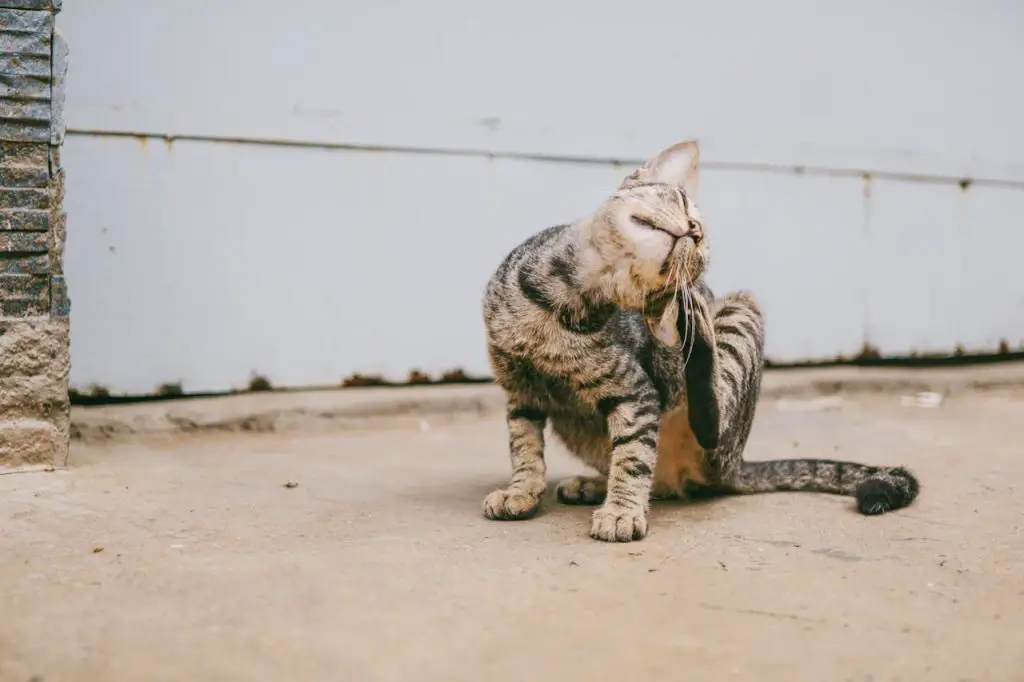
You’ll be surprised at how quickly your cat takes to a scratching post, especially if you place it in a high-traffic area or near a spot where they like to scratch.
The benefits of scratching for your cat are numerous, including exercising their muscles, maintaining nail health, and marking their territory.
When choosing a scratching post, consider the material, texture, and height. Cats often prefer sisal rope or carpeted surfaces, and a tall post will allow them to stretch and scratch comfortably.
Place the post in a stable location where it won’t tip over, and encourage your cat to use it by sprinkling catnip or treats on the surface.
Proper post placement is key to encouraging your cat to scratch the post instead of your furniture.
Engage in Playtime
Engaging your cat in playtime with stimulating toys and activities can redirect their biting behavior towards a more constructive outlet, satisfying their natural instinct to hunt and interact.
You’ll be providing alternative stimulation, which is a crucial part of teaching your cat not to bite. Interactive toys and engaging activities will keep your cat occupied, entertained, and most importantly, not biting.
Trending in Cats:
You can encourage positive playtime behavior by trying these activities:
- Use a variety of interactive toys, such as feather wands, laser pointers, and puzzle toys, to keep playtime engaging and stimulating.
- Rotate toys regularly to keep things fresh and exciting for your cat.
- Engage in playtime with your cat daily, setting aside dedicated time for interaction and bonding.
Watch for Warning Signs
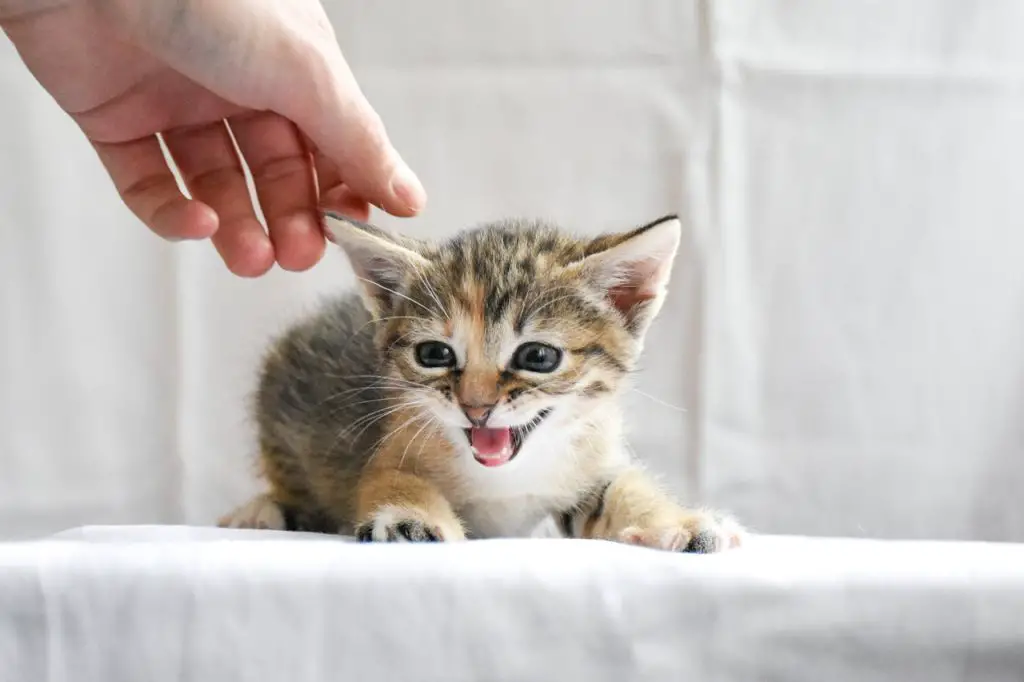
You’ll need to recognize the warning signs that your cat is about to bite, so it’s crucial to pay attention to their body language.
By doing so, you’ll be able to identify what triggers their aggression and take steps to prevent it.
You’ll learn how to decipher your cat’s postures, facial expressions, and vocalizations, allowing you to intervene before things escalate.
Recognizing Body Language
As you interact with your cat, pay attention to its body language, because recognizing the warning signs of impending aggression is crucial in preventing bites.
Cat communication is primarily non-verbal, and being able to decipher feline emotions through body language is key to avoiding bites.
When your cat is feeling tense or threatened, it will exhibit specific behaviors. You need to be aware of these signs, so you can intervene early and prevent escalation. Here are the warning signs to watch out for:
- Ears laid back or pointed sideways
- Tail twitching or lashing back and forth
- Whiskers forward or puffed out
If you notice any of these signs, it’s crucial to give your cat space and let it calm down.
Recognizing your cat’s emotional state through its body language allows you to respond accordingly, preventing bites and strengthening your bond.
By paying attention to these non-verbal cues, you can better understand your cat’s needs and emotions, creating a safer and more harmonious relationship.
Aggression Triggers

Certain situations and stimuli can trigger aggression in your cat, and recognizing these triggers is essential in preventing bites and developing a strategy to address them.
By understanding what sets your cat off, you can take steps to minimize or avoid those triggers altogether.
| Aggression Trigger | Description |
|---|---|
| Fear or Surprise | Loud noises, sudden movements, or unfamiliar environments can startle your cat and lead to aggression. |
| Pain or Discomfort | Medical issues, injuries, or even routine procedures like nail trimming can cause your cat to lash out. |
| Territorialism | Cats may become aggressive when defending their territory, food, or resources from other pets or people. |
| Overstimulation | Too much play, attention, or stimulation can overwhelm your cat and lead to biting or aggression. |
| Lack of Socialization | Cats that aren’t properly socialized may become aggressive around people or other animals due to fear or uncertainty. |
Manage Playtime Aggression
During play, some cats can become overstimulated, leading to aggression. Therefore, managing playtime effectively is essential to prevent biting.
You need to establish playtime routines that help your cat differentiate between play and other interactions. This way, you can prevent overstimulation and aggression.
To manage playtime aggression effectively, consider the following:
- Watch body language: Pay attention to your cat’s body language, such as tail swishing, ear flattening, or pupil dilation, which can indicate overstimulation.
- Use gentle play: Engage in gentle play with your cat, such as feather teasers or soft balls, to prevent overstimulation.
- Set play limits: Establish playtime limits to prevent exhaustion and overstimulation.
Reward Good Behavior Consistently
By consistently rewarding your cat for good behavior, you can reinforce positive habits and reduce unwanted biting, building on the progress you’ve made in managing playtime aggression.
When your cat exhibits calm behavior, such as sitting or gentle pawing, promptly reward them with cat treats or praise.
This encourages your cat to associate good behavior with positive outcomes, promoting behavioral consistency.
Reward Options for Good Behavior
| Behavior | Reward |
|---|---|
| Sitting calmly | Cat treats |
| Gentle pawing | Verbal praise |
| Playing with toys | Playtime extension |
| Soft meowing | Affectionate patting |
| Walking away from a biting stimulus | Treats and praise |
Frequently Asked Questions

You can still train an adult cat not to bite, but it’s more challenging. Understanding cat behavior is key; you’ll need to identify triggers and use positive reinforcement techniques tailored to adult training.
“When it comes to breaking the biting habit, you’ll be ‘cutting to the chase’ in no time! With consistent training techniques and a deep understanding of cat behavior, you can see improvements in as little as 2-4 weeks.”
You’ll likely see reduced biting behavior after spaying or neutering your cat, as this procedure eliminates hormonal fluctuations that can cause aggression. Don’t believe the neutering myths – spaying benefits your cat’s behavior and overall health.
Are you wondering if your cat’s biting is breed-specific? Research suggests yes, some breeds exhibit more aggressive cat behavior due to breed characteristics. You’ll want to investigate your cat’s breed traits to understand potential biting tendencies.
You shouldn’t punish your cat for biting; instead, focus on positive reinforcement techniques to address biting triggers. Identify what causes the biting and redirect the behavior to provide a more constructive outlet for your cat’s instincts.
Conclusion

By following these simple steps, you’ll be well on your way to taming your cat’s biting behavior.
Firmly establish feline-friendly boundaries, provide plentiful playtime alternatives, and consistently reward respectful reactions.
Watch for warning signs of impending aggression, and master managing mischief with patient, positive reinforcement.
With persistence and practice, your cat will learn to let go of biting, embracing more benevolent behaviors that bring bliss to your bond.


